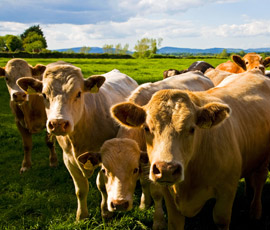Irish bovine TB drop attributed to badger cull

Bovine TB in cattle has fallen to “historically low levels” in Ireland after almost 25 years of culling badgers, according to the Irish government.
The Irish Department of Agriculture believes that for the first time since the 1950s, eradication of the disease is a “practicable proposition”.
DEFRA secretary Owen Paterson has been using the example of the culls in Ireland to make the case for a badger cull in England, with pilot schemes under way in the South West.
The Irish government has been culling badgers since 1989. A reactive badger control strategy is used, which involves removing badgers in areas surrounding new TB herd breakdowns.
About 6,000 badgers are culled annually in Ireland by trained government staff. Badgers are removed for postmortem examinations and carcasses are rendered in a licensed knackery. Last year, the cost of the badger removal programme was €3,062m (£2.59m).
The government-led package of measures to tackle TB includes annual herd testing, early removal of reactors and provision of compensation to farmers and a badger vaccination trial.
“The low incidence of TB over the past four years in particular is encouraging and indicates that the incidence has moved permanently to a new low level. The incidence of TB in 2013 is running at in excess of 20% below levels recorded in 2012.”
Irish government report
The UK government is trialling the controlled shooting and cage trapping and shooting of badgers, whereas in Ireland, badgers are snared and then shot.
This controversial measure has been partly credited for the 50% reduction in TB incidence in Ireland since 2000.
According to the Irish government, the effect of this wildlife control policy has been a “very significant improvement” in the bovine TB situation in recent years.
The number of annual TB reactors has fallen from 40,000 in 2000 to 18,500 in 2012. During the same period, cattle herd incidence has fallen from 7.5% to 4.1%.
“This is the lowest recorded since the commencement of the TB eradication programme in the 1950s,” said a recent bovine TB report, published by the Irish government.
“The low incidence of TB over the past four years in particular is encouraging and indicates that the incidence has moved permanently to a new low level. The incidence of TB in 2013 is running at in excess of 20% below levels recorded in 2012.”
The Irish government said it is “difficult to quantify the precise impact of badger culling on the incidence of TB in Ireland”, but the Irish Department of Agriculture, Food and Marine, attributes “much of the improvement in the TB situation in cattle” to the badger cull.
In Northern Ireland, a pilot control programme to tackle badgers infected with bovine TB is expected to begin next year. The government scheme – test and vaccinate or remove (TVR) – is being planned for two areas of County Down.
Badgers will be captured and tested for TB, vaccinated and released back into the countryside if healthy, or destroyed if found to be infected.
A spokesman for the Irish Department of Agriculture said: “It should be noted that, in 2012, animal prevalence of TB in Ireland was 0.3% compared with 0.66% in Northern Ireland, where culling isn’t practised.
“If the incidence of TB in Ireland was at the same level as in Northern Ireland in 2012, the number of reactors in Ireland would have been 37,000 rather than 18,500.
“On the assumption that the badger culling programme has reduced the number of reactors in Northern Ireland by at least 10,000, the annual saving to the department is €15m (13m) (each reactor saved as a result of culling saves the exchequer at least €1,500 (£1,300)).”
Meanwhile, badger vaccination trials are under way in several Irish counties, involving the vaccination of hundreds of badgers with the BCG vaccine over three to four years.
It is hoped that successful field trials will lead to the implementation of a vaccination strategy as part of the national TB control programme.
